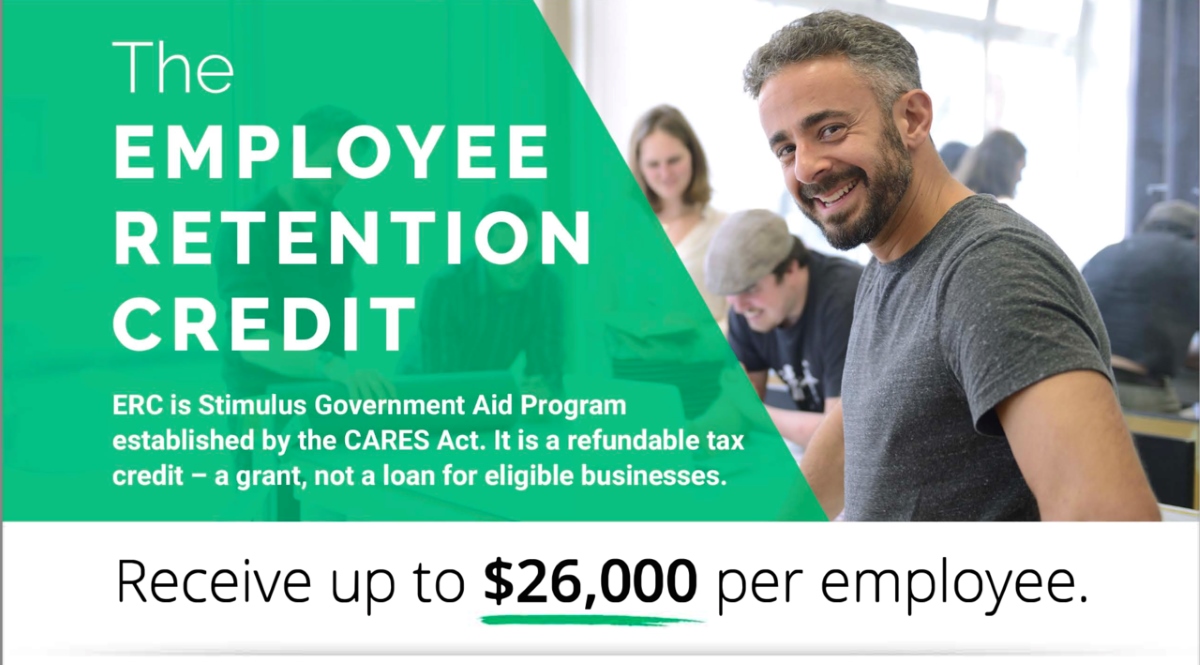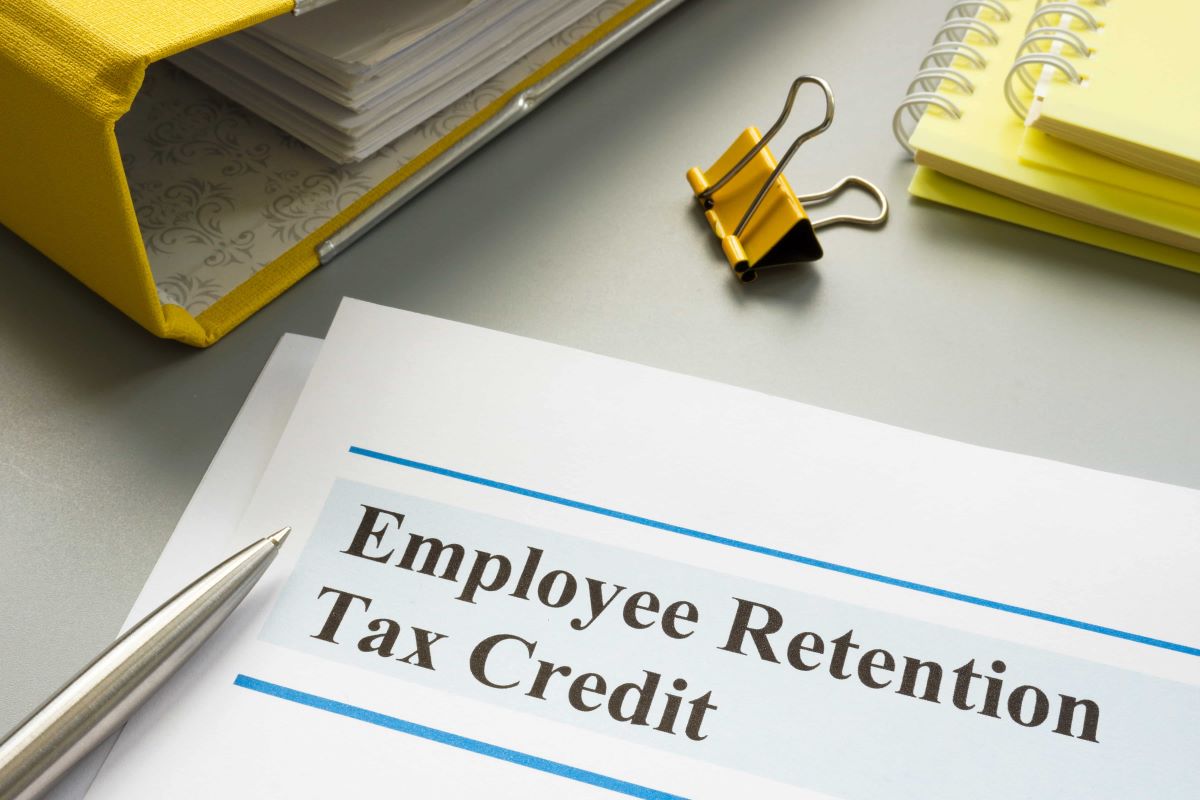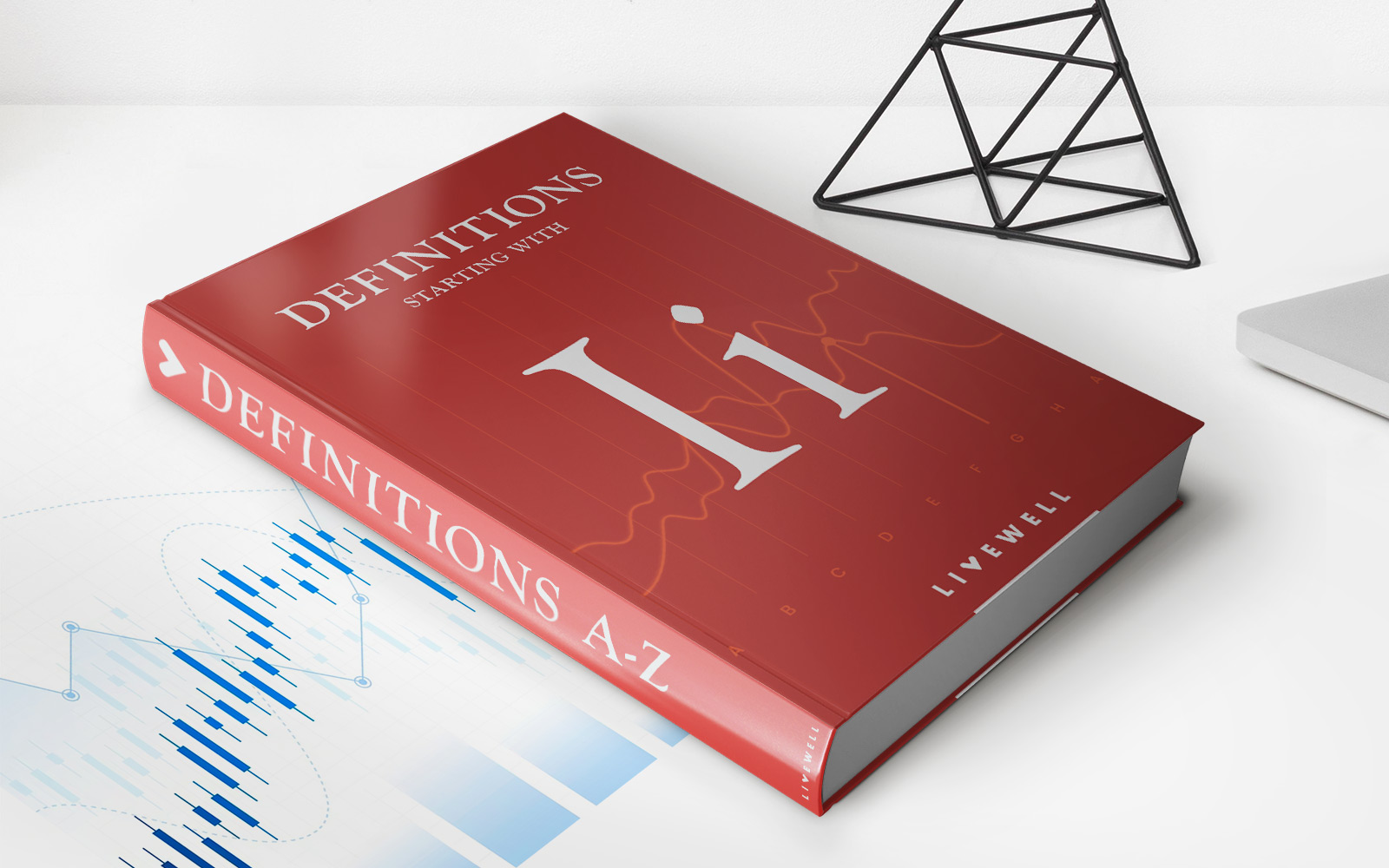Home>Finance>How Long Does It Take To Get Employee Retention Credit Refund


Finance
How Long Does It Take To Get Employee Retention Credit Refund
Modified: February 21, 2024
Discover how long it takes to receive a refund for the Employee Retention Credit and get financial insights on this finance-related topic.
(Many of the links in this article redirect to a specific reviewed product. Your purchase of these products through affiliate links helps to generate commission for LiveWell, at no extra cost. Learn more)
Table of Contents
- Overview of Employee Retention Credit Refund
- Eligibility for Employee Retention Credit Refund
- Calculating the Employee Retention Credit Refund
- Applying for the Employee Retention Credit Refund
- Processing Time and Timeline for Employee Retention Credit Refund
- Factors Affecting the Speed of Employee Retention Credit Refund
- Frequently Asked Questions about Employee Retention Credit Refund
- Conclusion
Overview of Employee Retention Credit Refund
The Employee Retention Credit (ERC) is a valuable tax credit designed to help businesses retain and pay their employees during times of economic uncertainty. It was introduced as part of the Coronavirus Aid, Relief, and Economic Security (CARES) Act in response to the COVID-19 pandemic. The ERC provides eligible businesses with a refundable tax credit for a portion of qualified wages paid to employees.
To provide further financial relief, the Consolidated Appropriations Act, 2021 extended and expanded the ERC. The amendment allows businesses that received Paycheck Protection Program (PPP) loans to now qualify for the ERC as well. This enhancement opens up the opportunity for a wider range of businesses to benefit from the credit.
The ERC is based on a percentage of qualified wages paid to eligible employees during specific periods of time. The refundable tax credit can be used to offset federal payroll tax deposits or can be claimed as a refund on Form 941, the Employer’s Quarterly Federal Tax Return.
This credit is available to businesses that experienced either a full or partial suspension of operations due to a government order, or a significant decline in gross receipts. It is important to note that businesses cannot claim the ERC for the same wages used to claim other tax credits, such as the Work Opportunity Tax Credit or the credit for paid family and medical leave.
Eligible employers can claim the credit for qualified wages paid after March 12, 2020, and before January 1, 2022. The credit amount varies depending on the specific time period and size of the business.
In summary, the Employee Retention Credit Refund is a valuable tax credit designed to support businesses in retaining and paying their employees during uncertain times. It provides financial relief by offering a refundable tax credit for a portion of qualified wages paid to eligible employees. The credit is available for specific time periods and is based on a percentage of qualified wages. Eligible employers can claim the credit on federal payroll tax deposits or as a refund on Form 941. This credit has been expanded to include businesses that received PPP loans, allowing more businesses to benefit from this financial assistance.
Eligibility for Employee Retention Credit Refund
To qualify for the Employee Retention Credit (ERC) refund, businesses must meet certain eligibility criteria. Understanding these requirements is crucial for determining if your business is eligible to claim the credit.
The ERC is available to two types of employers: those with a full or partial suspension of operations due to a government order, and those that experience a significant decline in gross receipts. Let’s take a closer look at the eligibility criteria for each category:
Suspension of Operations:
To be eligible for the ERC based on a suspension of operations, your business must have experienced a governmental order that fully or partially suspended your operations. This order must be related to the COVID-19 pandemic and issued by a federal, state, or local government authority. Examples of such orders include mandatory closures of non-essential businesses or restrictions on operating capacity.
It’s important to note that even if your business is deemed essential and allowed to operate, you may still qualify for the ERC if you experience a significant decline in gross receipts.
Significant Decline in Gross Receipts:
If your business did not have a full or partial suspension of operations, you may still be eligible for the ERC if you experienced a significant decline in gross receipts. The current threshold requires a decline of 50% or more when compared to the same calendar quarter in the previous year. However, for 2021, businesses can qualify if there is a decline of 20% or more in gross receipts.
It’s important to note that once your gross receipts for a calendar quarter exceed 80% of the gross receipts from the same quarter in the previous year, you are no longer eligible for the ERC starting from the following quarter.
Furthermore, for businesses with more than 500 full-time employees, the credit is only available for wages paid to employees who were not providing services due to the governmental order or significant decline in gross receipts. For businesses with 500 or fewer full-time employees, the credit is available for all wages paid during the eligible period, regardless of whether the employee provided services or not.
Overall, the eligibility for the Employee Retention Credit refund is based on the presence of a full or partial suspension of operations due to a governmental order or a significant decline in gross receipts. By meeting one of these criteria, businesses can apply for the credit and receive financial support to retain and pay their employees.
Calculating the Employee Retention Credit Refund
Calculating the Employee Retention Credit (ERC) refund involves determining the eligible wages and calculating the percentage of credit that can be claimed. Understanding how to calculate the credit is essential for businesses seeking financial relief through this program.
The ERC is calculated as a percentage of qualified wages paid to eligible employees during specific time periods. The specific percentage depends on the time period in which the wages were paid:
- For wages paid between March 12, 2020, and December 31, 2020, the credit is 50% of qualified wages, up to $10,000 per employee for the entire year.
- For wages paid between January 1, 2021, and June 30, 2021, the credit is 70% of qualified wages, up to $10,000 per employee per quarter.
- For wages paid between July 1, 2021, and December 31, 2021, the credit is 70% of qualified wages, up to $10,000 per employee per quarter.
Qualified wages include the cost of employer-provided health care benefits and are subject to certain limitations. The maximum eligible wage amount is $10,000 per employee per quarter, regardless of the size of the business.
It’s important to note that qualified wages may vary based on the size of your business. For businesses with 500 or fewer full-time employees, all wages paid during the eligible periods can be considered qualified wages. However, for businesses with more than 500 full-time employees, only wages paid to employees who were not providing services due to a governmental order or significant decline in gross receipts can be treated as qualified wages.
In certain circumstances, businesses that received Paycheck Protection Program (PPP) loans can also claim the ERC for qualifying wages. However, employers cannot include the same wages used to claim the ERC in their calculation of qualified expenses for loan forgiveness.
To calculate the ERC, businesses must add up the qualified wages for eligible employees during the specific time period and multiply them by the applicable credit percentage. For example, if a business pays $15,000 in qualified wages to an employee during the second quarter of 2021, the credit would be $10,000 (maximum per employee per quarter) multiplied by the applicable credit percentage (70%). Therefore, the ERC for that employee would be $7,000.
Calculating the Employee Retention Credit refund involves determining the eligible wages, understanding the applicable credit percentage, and considering any limitations based on the size of the business. By accurately calculating the credit, businesses can determine the amount they are eligible to claim and receive the necessary financial relief to support their operations and retain their employees.
Applying for the Employee Retention Credit Refund
Applying for the Employee Retention Credit (ERC) refund involves several steps to ensure businesses receive the financial relief they are entitled to. By following the application process correctly, businesses can claim the credit and receive the necessary funds to support their operations and retain their employees.
To apply for the ERC refund, businesses must complete the following steps:
Step 1: Determine Eligibility
Before applying for the ERC refund, businesses must determine if they meet the eligibility criteria. This includes assessing whether they experienced a full or partial suspension of operations due to a governmental order or a significant decline in gross receipts. By meeting one of these criteria, businesses can move forward with the application process.
Step 2: Calculate the Credit Amount
Businesses need to accurately calculate the credit amount they are eligible to claim. This involves determining the qualified wages paid during the specific time period and applying the applicable credit percentage. Remember to consider any limitations based on the size of the business, such as only including wages for employees who were not providing services due to a governmental order or significant decline in gross receipts.
Step 3: Claim the Credit on Employment Tax Returns
The ERC refund is claimed on employment tax returns, specifically Form 941: the Employer’s Quarterly Federal Tax Return. Businesses should use Line 11c to claim the credit for the applicable quarter. If the credit exceeds the employment tax liability, the excess can be treated as an overpayment and refunded or applied to future payroll tax deposits.
It’s important to accurately report the qualified wages and credit amount on Form 941 to avoid any discrepancies or delays in processing the refund.
Step 4: Keep Proper Documentation
Documentation is crucial when applying for the ERC refund. Businesses should maintain records that support the claim for the credit, including documentation related to the suspension of operations, decline in gross receipts, and qualified wages. This documentation may be requested by the IRS during an audit, so it’s essential to keep proper records to substantiate the claim.
Step 5: Seek Professional Assistance
Applying for the ERC refund can be complex, especially for businesses with multiple employees and different wage classifications. Seeking the assistance of a qualified tax professional or accountant can help ensure that the application process is smooth and accurate.
By following these steps, businesses can successfully apply for the Employee Retention Credit refund. It is important to adhere to the guidelines and keep accurate documentation to support the claim. With the proper application and documentation, businesses can receive the financial relief they need to navigate through economic uncertainties and retain their valuable employees.
Processing Time and Timeline for Employee Retention Credit Refund
The processing time for the Employee Retention Credit (ERC) refund can vary depending on various factors, including the volume of applications and the accuracy of the information provided. While the exact timeline for receiving the refund may differ from case to case, understanding the general processing time can help businesses plan accordingly.
It’s important to note that the IRS has been working diligently to expedite the processing of ERC refunds to provide timely financial relief to eligible businesses. However, due to the high volume of applications and the complexity of the credit, it may take some time for the refund to be processed.
The processing time for the ERC refund typically ranges from a few weeks to a few months. However, it’s worth mentioning that the IRS is continuously refining their processes and aiming to reduce the processing time as much as possible.
Here is a general timeline that businesses can expect when applying for the ERC refund:
Submission of Application
Once the application is submitted, either through Form 941 or another applicable IRS form, it enters the processing system. The IRS verifies the information provided and checks for any discrepancies or missing documentation.
Review and Verification
The IRS reviews the application and associated documentation to ensure that the business meets the eligibility criteria and has accurately calculated the credit amount. They may request additional information or documentation to support the claim if needed.
Processing and Calculation
Once the application and documentation have been reviewed and verified, the IRS calculates the exact amount of the ERC refund based on the qualified wages and applicable credit percentage. They ensure that all relevant factors, such as the size of the business and any limitations, are taken into account during this process.
Refund Issuance
After the calculation is completed and any necessary adjustments are made, the IRS issues the ERC refund to the business. The refund can be applied as a credit against future payroll tax deposits or can be requested as a direct refund.
It’s important to monitor the status of the ERC refund application using the IRS online tools or by contacting the IRS directly for updates on the processing time. Resolving any issues or providing additional information promptly can help expedite the refund process.
Overall, while the processing time for the Employee Retention Credit refund can vary, businesses can generally expect a waiting period of a few weeks to a few months. Staying informed and providing accurate information and documentation can help facilitate the processing and ensure a smoother refund experience.
Factors Affecting the Speed of Employee Retention Credit Refund
The speed at which a business receives the Employee Retention Credit (ERC) refund can be influenced by several factors. While the exact processing time is determined by the Internal Revenue Service (IRS), understanding these factors can help businesses anticipate potential delays and take steps to expedite the refund process.
1. Volume of Applications:
The volume of applications being received by the IRS can have a significant impact on the speed of processing. During times of high demand, such as when legislative changes or extensions are announced, the IRS may experience a backlog of applications. This can lead to delays in processing and issuing refund payments.
2. Accuracy and Completeness of Information:
The accuracy and completeness of the information provided on the application are crucial for the timely processing of the ERC refund. Any errors, omissions, or inconsistencies in the application can lead to delays as the IRS may need to request additional information or clarification. It is important to double-check all information and ensure that supporting documentation is included to prevent unnecessary delays.
3. Verification and Review Process:
The IRS conducts a thorough review and verification process to ensure that businesses meet the eligibility criteria and have accurately calculated the credit amount. This process involves cross-referencing the provided information with their records and may require additional checks or documentation. The time taken for this verification process can vary depending on the complexity of the application and the workload of the IRS at the time.
4. Response to IRS Requests:
If the IRS requires additional information or documentation to verify the application, the speed at which the business responds can impact refund processing time. It is important to promptly provide any requested information or clarification to avoid unnecessary delays. Proactively communicating with the IRS and following their instructions can help expedite the processing of the refund.
5. IRS Process Improvements:
The IRS is continuously working to improve their processes and reduce the processing time for the ERC refund. They have implemented updates to their systems and procedures to handle the high volume of applications more efficiently. While these process improvements can help expedite the refund, it is important to recognize that the IRS is still subject to the constraints of their workload and resources.
It’s crucial for businesses to stay updated on any changes or announcements made by the IRS regarding the ERC refund process. This can include checking the IRS website for updates, utilizing online tools to monitor the application status, and contacting the IRS directly for any necessary inquiries.
While businesses may not have direct control over the processing time, they can ensure that their application is accurate, complete, and promptly responded to. By understanding the factors that can influence the speed of the ERC refund, businesses can take proactive steps to expedite the process and receive the much-needed financial relief in a timely manner.
Frequently Asked Questions about Employee Retention Credit Refund
Here are some commonly asked questions about the Employee Retention Credit (ERC) refund:
1. Who is eligible to claim the ERC refund?
Eligible employers include those who experienced a full or partial suspension of operations due to a government order or a significant decline in gross receipts. The credit is available for wages paid after March 12, 2020, and before January 1, 2022.
2. Can businesses that received Paycheck Protection Program (PPP) loans claim the ERC?
Yes. The Consolidated Appropriations Act, 2021 expanded the ERC to include businesses that received PPP loans. However, employers cannot claim the credit for the same wages used to claim forgiveness of the PPP loan.
3. How is the ERC calculated?
The ERC is calculated as a percentage of qualified wages paid to eligible employees during specific time periods. The credit percentages vary depending on the time period in which the wages were paid. For example, between January 1, 2021, and June 30, 2021, the credit is 70% of qualified wages, up to $10,000 per employee per quarter.
4. Can the ERC be retroactively claimed?
Yes. The ERC can be claimed retroactively for eligible wages paid after March 12, 2020. Businesses that previously did not claim the credit can amend their employment tax returns to claim the refund.
5. How can businesses apply for the ERC refund?
Businesses can apply for the ERC refund by completing Form 941: the Employer’s Quarterly Federal Tax Return. The credit is claimed on Line 11c of this form. The refund can be applied as a credit against future payroll tax deposits or requested as a direct refund.
6. Are there any limitations on qualified wages?
Yes. Qualified wages are subject to certain limitations. The maximum eligible wage amount is $10,000 per employee per quarter, regardless of the size of the business. Additionally, for businesses with more than 500 full-time employees, only wages paid to employees who were not providing services due to a governmental order or significant decline in gross receipts can be treated as qualified wages.
7. How long does it take to receive the ERC refund?
The processing time for the ERC refund can vary. It typically ranges from a few weeks to a few months. Factors that can impact the speed of processing include the volume of applications, the accuracy of the information provided, and the response time to any IRS requests for additional documentation.
These are some of the frequently asked questions about the Employee Retention Credit refund. It’s important to consult with a qualified tax professional or refer to the IRS guidelines for specific details and clarifications regarding eligibility and the application process.
Conclusion
The Employee Retention Credit (ERC) refund is a valuable tax credit designed to support businesses in retaining and paying their employees during times of economic uncertainty, such as the COVID-19 pandemic. By understanding the key aspects of the ERC and the application process, businesses can take advantage of this financial assistance and navigate through challenging times.
Eligible businesses can claim the ERC refund by meeting the eligibility criteria, such as experiencing a full or partial suspension of operations due to a government order or a significant decline in gross receipts. It is important to accurately calculate the credit amount based on qualified wages and apply for the refund using the appropriate forms, such as Form 941.
Factors that can affect the speed of the ERC refund processing include the volume of applications, the accuracy and completeness of information provided, prompt response to any IRS requests for additional documentation, and ongoing process improvements implemented by the IRS.
By taking the necessary steps and following the guidelines, businesses can increase their chances of receiving the ERC refund in a timely manner. It is recommended to keep proper documentation to support the claim and seek professional assistance if needed.
Overall, the Employee Retention Credit refund serves as a lifeline for businesses, providing them with financial relief to retain and pay their employees during uncertain times. By leveraging this credit, businesses can continue their operations, support their workforce, and contribute to the overall economic recovery.














